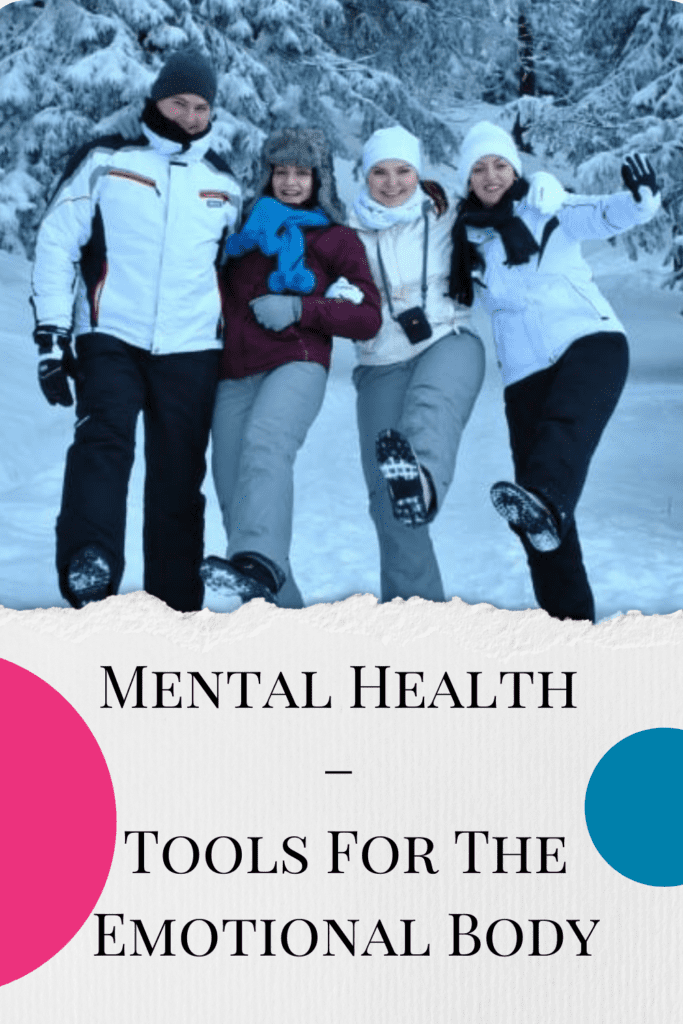 As the research grows, researchers are finding that both mental and physical illnesses are a result of unaddressed emotional wounds or trauma. Several pain syndromes that lack medical explanation such as chronic back pain, fibromyalgia and IBS– to name a few, are associated with chronic stress and emotional traumas. Often it is not the situations that life throws at us, but the way in which we perceive and react to them that determines if we will be transformed or permanently traumatized.
As the research grows, researchers are finding that both mental and physical illnesses are a result of unaddressed emotional wounds or trauma. Several pain syndromes that lack medical explanation such as chronic back pain, fibromyalgia and IBS– to name a few, are associated with chronic stress and emotional traumas. Often it is not the situations that life throws at us, but the way in which we perceive and react to them that determines if we will be transformed or permanently traumatized.
Addressing our psychological needs and honouring them with as much respect as our physical needs is at the root of emerging from the grip of anxiety and depression. In fact, many shamanic traditions believe that mental illness is the result of spiritual crisis. Spiritual crisis goes further than our forming our religious beliefs. By understanding and connecting with our purpose in life, seeking meaning from our experiences and fostering our growth into our highest selves we nurture our spiritual health and well-being.
There is a fine balance between wallowing in our sorrows and hardening our emotions into numbness. Often people who struggle with mental health issues may sway from one extreme to another. Some may feel things too deeply and feel overwhelmed as a result. Others refuse to be taken down by any emotion and so will not sit long enough with an uncomfortable emotion long enough to allow it to process and transform. They believe that emotions, if not indulged, will simply go away. Unfortunately, this is not the case.
Emotions are very real. Scientists have found that memories are stored in our cells–called ‘cell memory’. They came upon this with the advent of organ transplants when recipients suddenly had a wave of memories and preferences that were not their own. Since memories are chemical reactions and negative ones are known to cause everything from headaches, to muscle tension to inflammation and even high blood pressure, ignoring your emotions is essentially ignoring your physical health.
Below are some other basic lifestyle strategies that have been shown to be helpful in addressing, shifting and caring for our emotional health.
1) Feelings are Messengers – Emotions are not an inconvenient reaction or nuisance to the events and situations that occur in life. They are messengers. They inform us about how we feel about someone, show us our beliefs and the stories we tell ourselves and point to the raw spots of our past that remain triggers.
Psychologists understand anxiety to be the result of a mix of unaddressed emotions. Anxiety is growing in epidemic proportions in recent decades. With the increased use of technology at every moment of the day, it is easier than ever to escape a difficult emotion. We never have a free moment to reflect and process the day, our thoughts or our emotions. This is unfortunate because our emotions are our informers. If we feel hurt by someone’s behaviour, it may not be the behaviour, but our own beliefs that we hold about ourselves that triggered an undesirable emotion. Emotions tell us how we feel about something and help to guide us in and out of situations so that ideally we are moving towards our highest self. If we ignore our feelings and continue to trudge on in the same situation, we develop depression because our situation feels hopeless. After a time, we become numb and may no longer feel extreme pain, but neither joy as well.
Think of children. They are very good at fully experiencing their emotions and have no shame in doing so. They feel it fully in the moment and then it is gone with no resentments left behind. We certainly don’t need to act out like children to experience our emotions. We simply need to be with them, fully and whole-heartedly, so that we can let them go.
Acting on our emotions are what gets us into a lot of trouble in life and it is our experiences that act as mirrors of our own insecurities and beliefs. Some triggers run much deeper than a current situation. Someone who was bullied as a child may be triggered as an adult in new social situations, or even in intimate relationships. They may struggle as an adult to believe they are worthy of supportive and loving friendships. They may find themselves with the ‘disease to please’, seeking approval from friends, family, colleagues and their employers. Their worth is based on the approval and support of others instead of being intrinsic. It is much easier to point the finger and say “how dare she!” or fall into the victim mentality that “everyone always uses me.” Of course we should never endure abuse or unsupportive people in our lives, but when our insecurities fade, so to do our reactions. This explains why people who have the most baggage tend to be the most reactive to the smallest of situations; their wounds are deep and wide.
In areas that are not raw spots, we are not as likely to become triggered. Don’t wallow in your emotions, but feel the emotion fully and completely, breathing through it, drawing attention to it in your body and then release it. All emotions are transient; the brain cannot stay fixed on the same emotion for longer than 90 seconds. An intensely difficult emotion will shift briefly to the present or wander to another thought or emotion. Even those who suffer from clinical depression are not in a permanent state of despair. Even they have moments when they are thinking thoughts unrelated to their grief. The difference is the frequency and severity of their depressive emotions.
When confronted with difficult emotions ask yourself why it is there. If we do not allow ourselves to properly honour our emotions by feeling them, they cannot be released and thus remain in the physical body creating pain and inflammation which leads to a whole array of mental and physical health problems. Keep in mind that a thought precedes an emotion. When we can change our thoughts, then we change our emotional experience and thus our lives.
2)Journal – Journalling is a powerful way to understand, process and even release emotions. By writing our stories down and turning them into the concrete, journalling allows us to detach from the train of thoughts and feelings that float  around in our mind. Studies show that people who journal have improved immune systems, decreases high blood pressures, improves arthritis, improved the white blood cell count of AIDS patients, faster wound healing and even decreased pain among cancer patients. Journalling can be done online on various websites, as well as on a computer program or by writing hand in a notebook. Writing by hand has been shown to be more emotionally therapeutic due to the kinesthetic aspect of handwriting. “The idea,” says Dr. Dr. James W. Pennebaker, social psychologist at the University of Texas and a pioneer in writing therapy, “is to simply write your deepest feelings without guilt or editing.”
around in our mind. Studies show that people who journal have improved immune systems, decreases high blood pressures, improves arthritis, improved the white blood cell count of AIDS patients, faster wound healing and even decreased pain among cancer patients. Journalling can be done online on various websites, as well as on a computer program or by writing hand in a notebook. Writing by hand has been shown to be more emotionally therapeutic due to the kinesthetic aspect of handwriting. “The idea,” says Dr. Dr. James W. Pennebaker, social psychologist at the University of Texas and a pioneer in writing therapy, “is to simply write your deepest feelings without guilt or editing.”
3) Gratitude – Gratitude is another way of extending journalling or one can simply make mental note of their blessings. This has been shown to have powerful results in relation to mental health. Essentially, researchers have linked the depth of one’s gratitude to the degree of one’s happiness. So why would gratitude journalling and making a point to be grateful throughout the day be so powerful? Because by constantly bringing awareness to how much we have, we shift our thoughts away from pessimism and towards optimism instead. The glass is now half full.
Gratitude journalling is also a catalyst for change because the more we make a point to pay attention to the parts of our life that we are grateful for, the more we look for reasons to be grateful. Gratitude is like fire. It spreads. One moment we are grateful for our health and the next we are grateful for friends, our home, our job etc. By shifting our thoughts to gratitude, we change our thoughts and thus our emotional state. When we are happier and lighter, we tend to draw more positive experiences and people towards us, creating even more abundance in our lives and therefore more reasons to be grateful. The answer is simple. When was the last time you met a grateful, miserable person?
4) Socialize – We are social creatures. So does it come as any surprise that having an active social life with supportive, like-minded individuals is one the most influential factors affecting mental health? Mother Teresa hit the bull’s eye when she said “loneliness and the feeling of being unwanted is the most terrible poverty.” Despite the affluence of Westernized countries, we have the highest rates of depression and suicide in the world. In fact, individuals who live in countries with some of the highest poverty rates report significantly higher levels of happiness than their Western counterparts. Analysts attribute this to the loneliness and competitive nature of our culture in which we never have enough or are enough. We have so much to be grateful for and yet suffer from a lack mentality. Independence is further encouraged–often to the point of isolation. While individuals in other countries may struggle financially they have an intimate connection with their community and strong social networks which provides them with the support and emotional resilience to endure their hardships.
 When we are feeling depressed or anxious it is natural to want to avoid people, but it is the exact opposite of what we should be doing. Socialization increases seratonin levels and even increases our lifespan. A landmark study conducted by UCLA found that the reason women live longer than men is because they unconsciously manage the hardships and stresses in their lives through intimate, supportive friendships whereas men are more prone to isolate themselves.
When we are feeling depressed or anxious it is natural to want to avoid people, but it is the exact opposite of what we should be doing. Socialization increases seratonin levels and even increases our lifespan. A landmark study conducted by UCLA found that the reason women live longer than men is because they unconsciously manage the hardships and stresses in their lives through intimate, supportive friendships whereas men are more prone to isolate themselves.
The power of strong social networks is further demonstrated by the surprisingly low incidences of winter depression in Denmark due to their practice of what is known as ‘Hygge‘. The Danes have been at the top or near the top of the happiness index in Europe for approximately 40 years despite living in a Northern climate with harsh winters. Known as a difficult concept to translate, words that connote hygge are ‘togetherness’ and ‘coziness’. Lotte Hansen, a library science student explains that instead of physical coziness, hygge is a mental coziness, similar to a Christmas time feeling, but an extended one–minus the stress and commercialization.
Family and friends gather together to create a sense of intimacy and camaraderie. Hygge is a feeling coupled with an atmosphere that is created through material comforts. Candlelit homes, night skating, outdoor saunas, reading a book in front of the fire and socializing with family and friends are all part of hygge. So how does hygge help those of us who don’t live in Denmark? Very simply, we don’t have to accept that winter depression is a ‘given’ in the North. We can make a point to create our own hygge or inner warmth with our family and friends. Despite our inclination to stay indoors when the weather gets cold, people who find activities to do outside are at less risk of developing Seasonal Affective Disorder. The bottom line is that we were not meant to go through this life alone and we should make a point to cultivate a rich social life filled with supportive and meaningful relationships.
In my next post I will talk about additional tools to support our emotional health.
Until then–be Well!



2 thoughts on “Mental Health – Tools for the Emotional Body”
Reblogged this on hellohappinessx and commented:
This is so powerful. I will definitely be taking on board some of these tips!
I am happy that you found it helpful. Happy holidays! 🙂